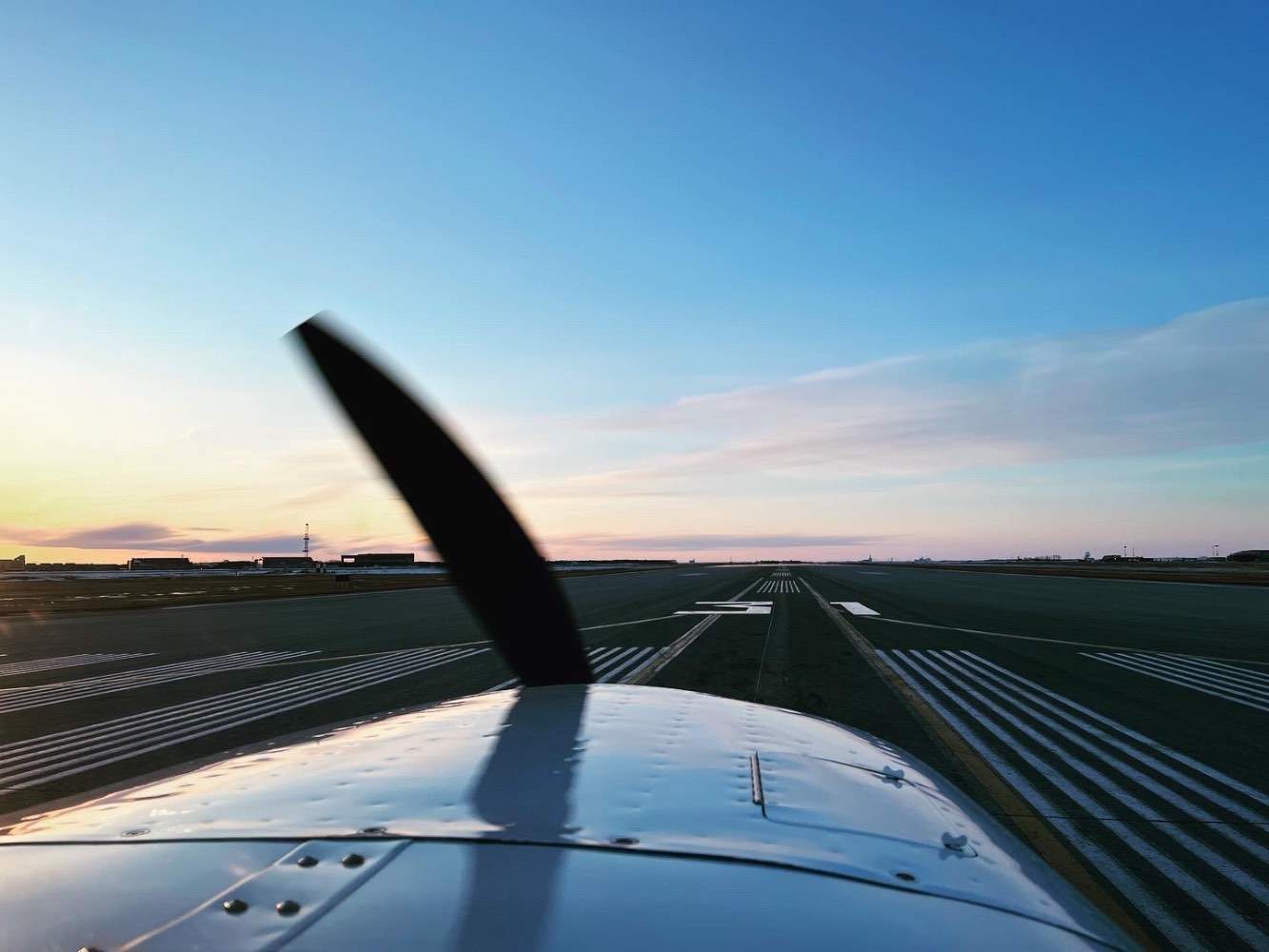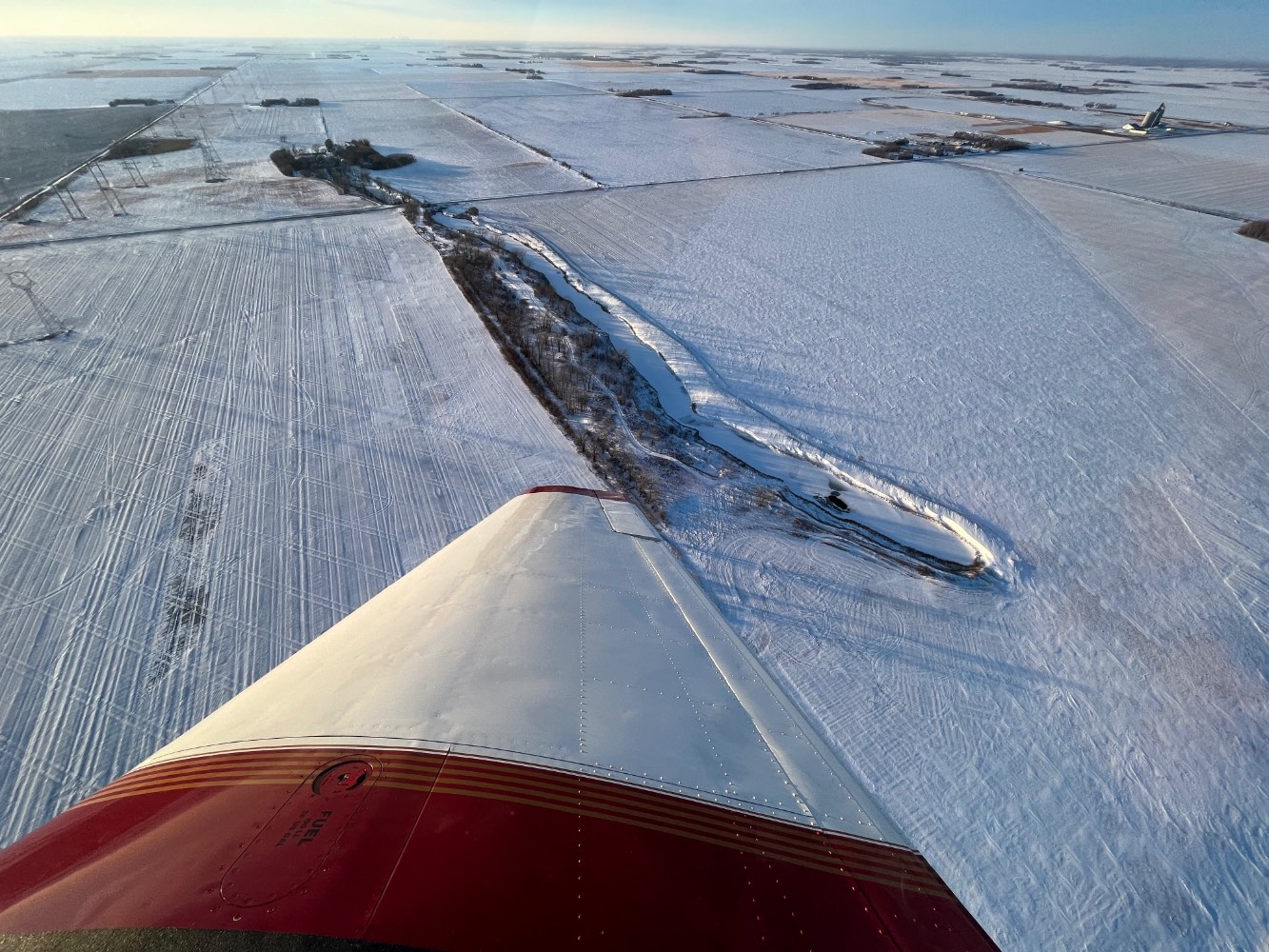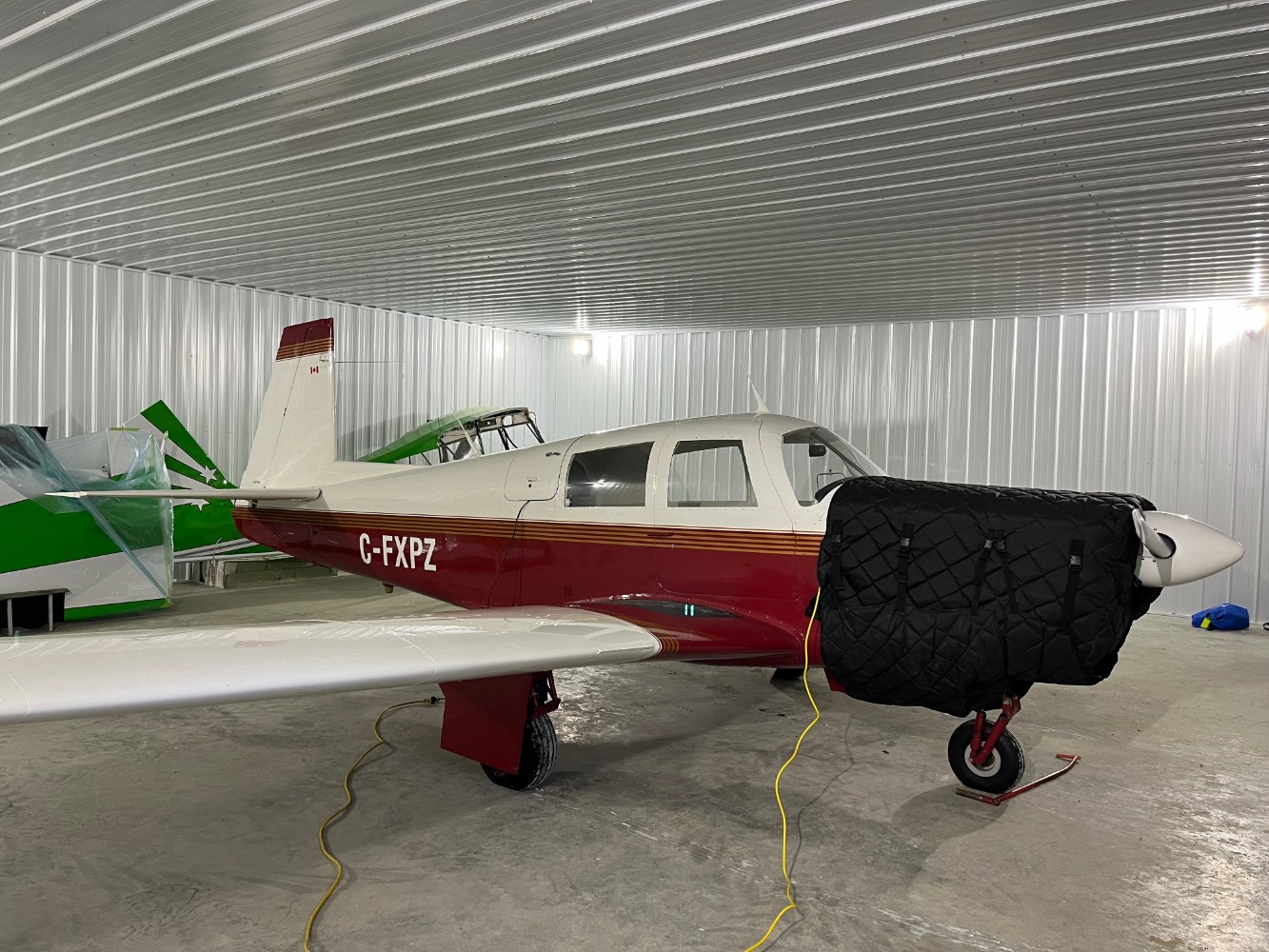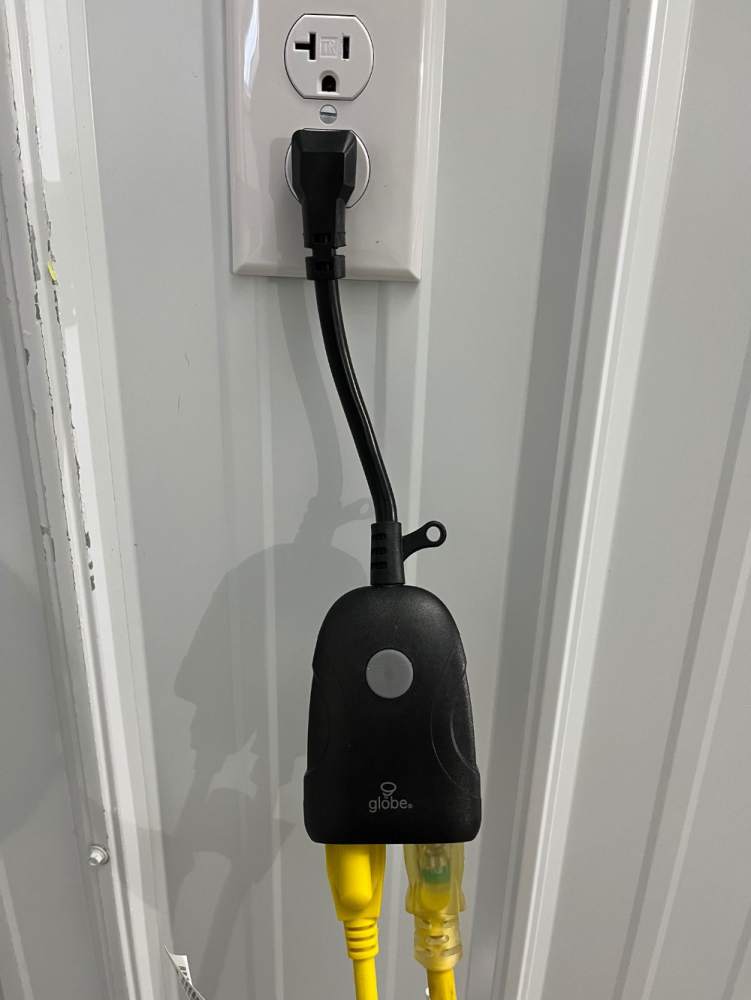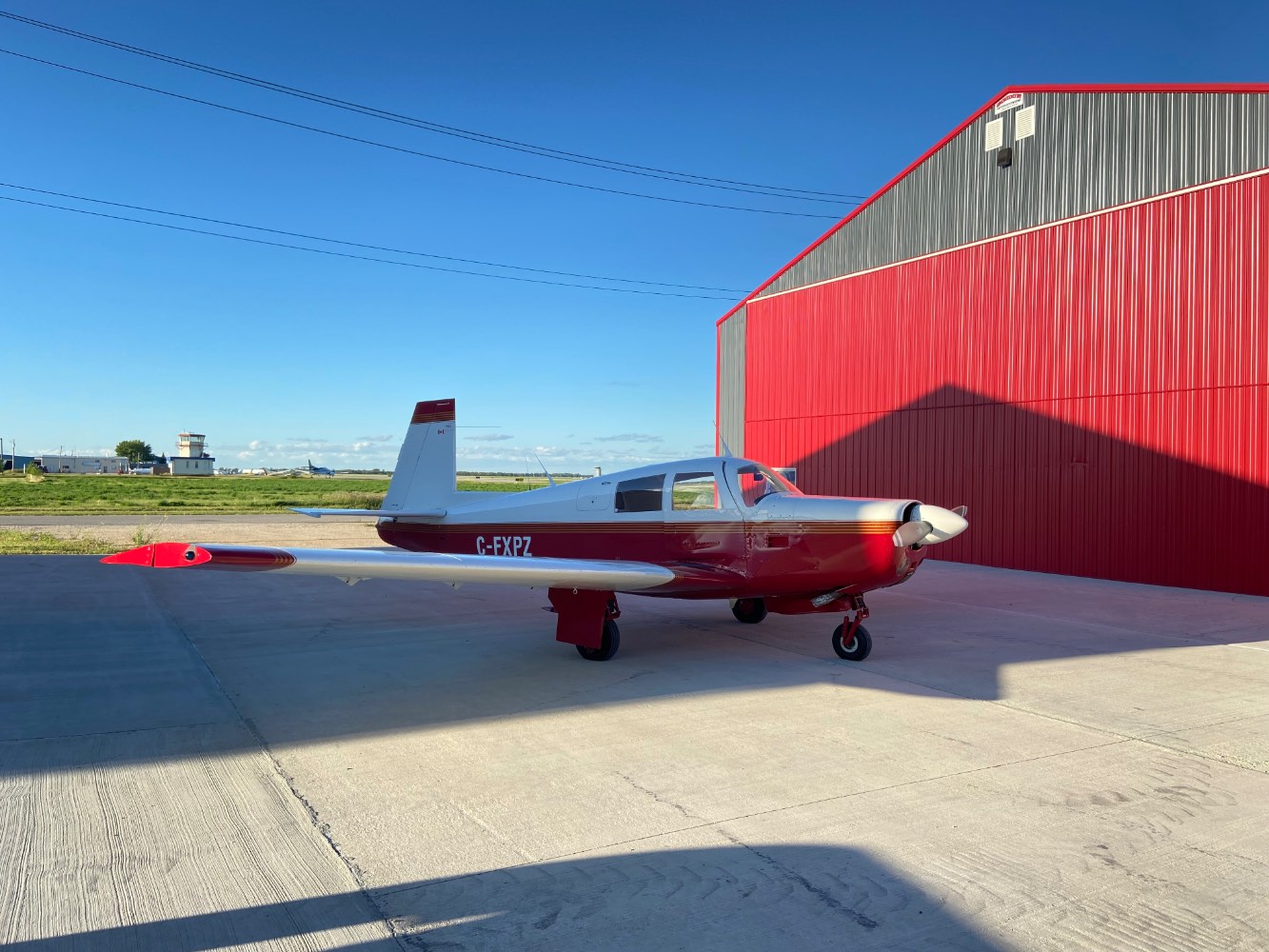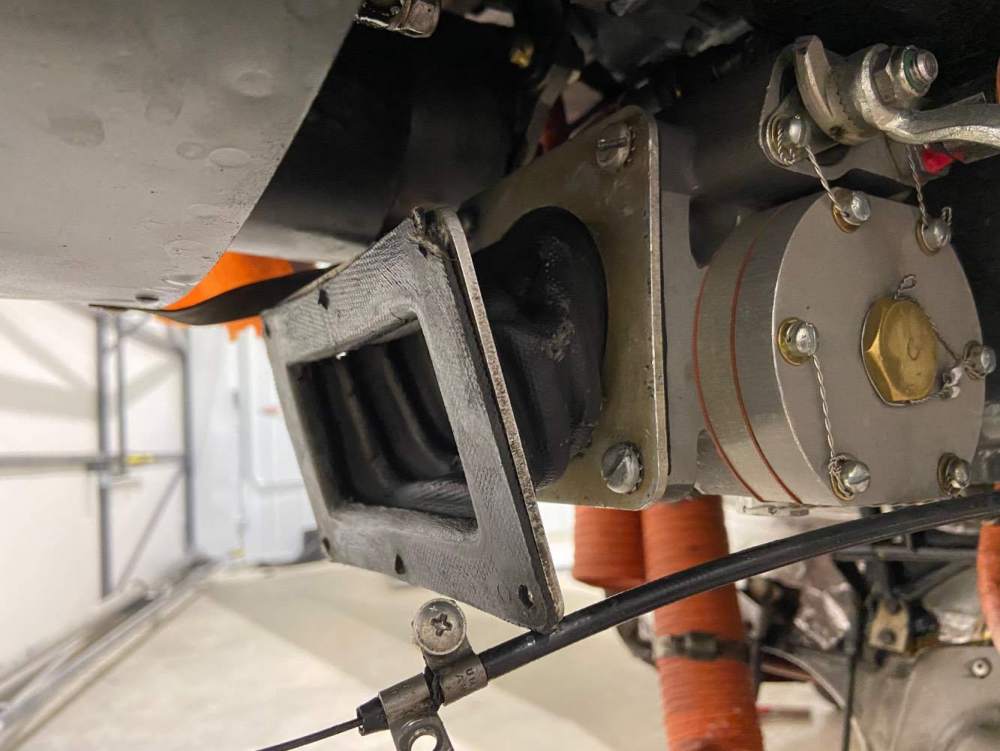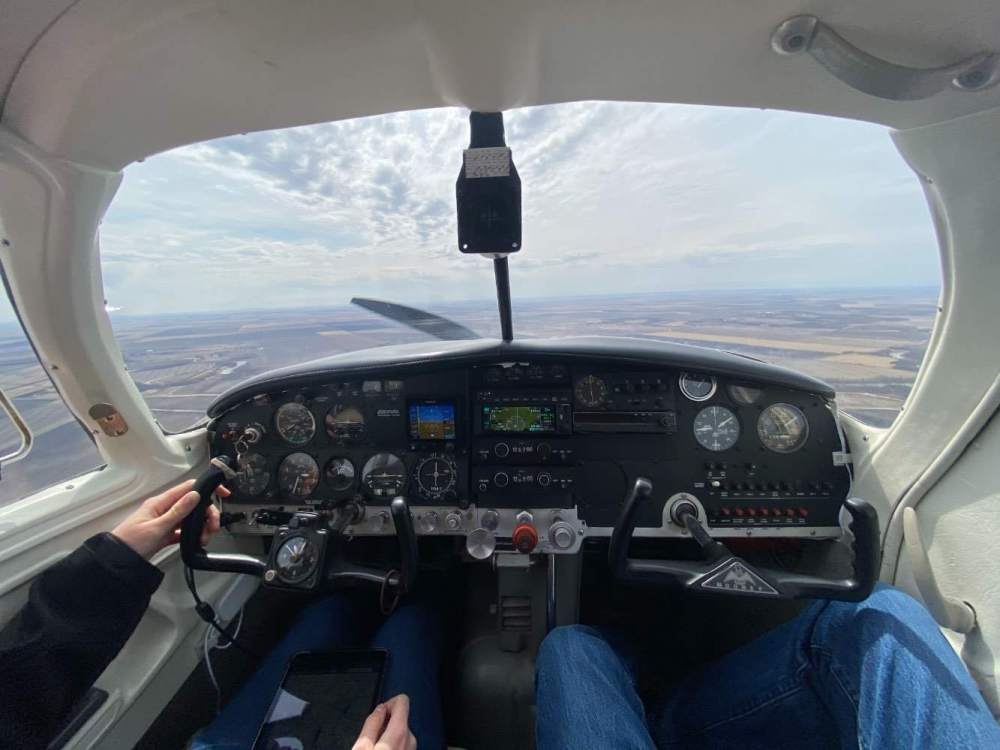-
Posts
82 -
Joined
-
Last visited
Content Type
Profiles
Forums
Blogs
Gallery
Downloads
Events
Store
Everything posted by ArrowBerry
-
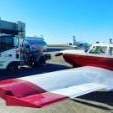
Where to source a new spinner
ArrowBerry replied to ArrowBerry's topic in Vintage Mooneys (pre-J models)
Ours is a 67E, would the spinner off of a 67F be the same if it has the same model of propeller? -
Hartzell HC-C2YR-1BF propeller, we found this on the post flight walk around. Clearly the spinner has been stop drilled already, and that middle piece broke off in flight today. I’ve looked at Hartzell’s website and application guide, where else is a good source for a new spinner? Do you also have to replace the back plate?
-
Thanks for the response. Hopefully ours are not cracked then, but if we run into trouble I will get in touch with Lasar.
-
Bringing up an old post for clarification! We are coming due for this 500 hour inspection on our 67E. Our intention is to do the inspection and reassemble, barring any cracks! Best case scenario. However, if the inspection turns up cracks or wear I am reading in the SB that a 1967 year is not eligible for a repair. Therefore, a new direct replacement is necessary. I seen above that Top Gun Aviation is a potential source, are there any others? Laser? Assuming that we don't upgrade to a different part number from a newer model. From reading the AD I understand that replacing the old shaft with new will permit a new inspection time of 1000 hours, recurring. Does anyone have anymore input on this?
-
Hey all, We're slowly gathering information regarding a panel upgrade in our 1967 E which includes radio(s), and an AP. Our most recent question is regarding the extra cost of electric trim and yaw damp. While there's no question as to the added benefit of these systems, how hard are they to add after? If one was low on budget and went ahead with a very basic installation, can these features be added in years down the line to spread out the cost? Or is it a lot of work, and therefore expensive and not worth splitting up...aka, just close your eyes and spend the extra money when you put it in?
-
Are you selling them second hand?
-
Hey guys, I know I'm asking about a dinosaur. Trust me, I want the Garmin 255 or a 430 or something that isn't decades older than I am... however... in the meantime, what are some slide in replacements for a Narco 120 Comm radio? We have two of them, our Comm 1 is great. Clear, great range, strong readability etc. Our Comm 2 works, but it's so scratchy and has such a terrible squelch to it that it's really only useful to quickly grab an ATIS, or as a last resort to backup Comm 1. It's not useable to monitor a second frequency, such as 121.5, because there is such an awful noise. The last straw came recently when the frequency window stopped working for the big numbers. The knob to change frequencies works but you have the count the numbers to know when to stop turning! I've looked on eBay and I'm putting the word out to some local guys to see if someone has one of these sitting on the shelf. Other than a straight swap, what else would fit into the tray and be relatively easy to interchange? Cheers!
-

Winter kit for Mooney 20C
ArrowBerry replied to Rusty Pilot's topic in Vintage Mooneys (pre-J models)
Other cold climate operators have chimed in already and our experience has been the same with our E model in Winnipeg. In temperatures below -20C we'll cover about half of the oil cooler with aluminum tape. Usually the oil temperatures are not the issue, they seem to reliably hold around 180 degrees really nicely. As @Jcmtl pointed out, it's usually the CHTs which are cold and without having some kind of cover for the cowl inlets I'm not sure how to solve that issue. Realistically though that's only on the coldest of days, maybe -25C and colder. Even so, the cabin heat is fantastic. We preheat with an oil pan heater overnight and a forced air buddy heater in the cabin for about an hour before we fly. -

Engine Monitor Preference
ArrowBerry replied to ArrowBerry's topic in Vintage Mooneys (pre-J models)
Thanks for the input Mark. My mechanic has also expressed to me his dislike of the Garmin probes, being an older design that is less desirable? I am not incredibly mechanically savvy so don't ask me what that means, lol, but he was highly in favour of the CGR combo as well. An autopilot is also in the works so we'll see what the budget allows! Many thanks! -
Does anyone have, or know where you can get, a copy of the GFC 500 STC for an M20E? I'm looking for the part numbers for the servos and components to build the autopilot so that I can price it out... it has been a very unproductive online search thus far. Basically I work for a company who is a Garmin dealer, and I've ordered Garmin products for our Mooney from them in the past. Garmin, however, seems very secretive about the STC and part numbers for the autopilot. Other items are easily found online, even through their own website. I know that I can "contact my Garmin dealer" and have them spend a few hours looking into it for me to get an official quote. Just looking to do as much of my own leg work and research as possible.
-
I suppose they don't call it "Winterpeg" for no reason! You have to think a little bit warm up here. The winter flying is fantastic though, for the little bit of extra effort it takes you get a lot of great weather flying days and fantastic performance. Although, we still like to point her south at least once a year to find the palm trees!
-
With a good insulated engine cover and the oil pan heater on overnight, the oil temperature registering on the gauge during start was around 130 degrees. It's ironic that even though we have to shovel out the hangar and show up to fly in a parka, preheating actually makes the engine significantly warmer for starting compared to the summer when we just jump in and go. So much so that if you prime too much and follow a usual cold start procedure, you'll probably end up flooding the engine!
-
We only have the plan from about November to March, 5 months. We’ll cancel it for the summer.
-
I was at the hangar this past week and I took pictures of our set up for preheating. For those who are interested--this is what we came up with for this winter. Our plane has an EZ heat oil pan heater which works great, except the hangar is a 40 minute drive and we don't leave it plugged in unless we are flying. The issue of having to drive out the day before was just too much of a hassle and had to be planned ahead. The hangar has no wifi but we wanted to set something up to control it remotely. Originally we had looked at the SwitchBox and some of the premade solutions but they're a little pricy and we decided to try our own thing. We had a spare iPhone 8 at home and got a $15/month phone plan with 250mbs of data, which was the cheapest we could find as a stand alone plan. We created a mobile hotspot in the hangar and paired it with a GlobeElectric wifi smart plug that has two, individually controlled outlets. Bonus it's also an outdoor plug so we can use this if we overnight outside on a trip. Initially we had problems with the hotspot randomly turning off when we tried it at home, but leaving the screen on the hotpot page seemed to force it to stay on. Whereas the Home Screen or anything else allowed it to turn itself off. Also make sure the screen won't go to sleep, and everything is turned off in the background so it doesn't suck data. One of the outlets is plugged into the EZ heat pan heater so we can turn that on the night before and give it 12+ hours to completely warm up. The second plug is for a forced air buddy heater that we run in through the baggage door to warm the cabin. I've found that about 60-90 minutes is a good amount of time to run this when the temperatures are cold, like -20C or 0F. An app on my phone allows us to turn on each plug separately, or preselect a time for them to come on. It's really handy to be able to control them separately, because 90 minutes isn't enough time for the EZ heat to work and having the buddy heater on all night is overkill. When we went flying last week the engine was toasty under the blanket, and the cabin was comfortably warm. Not just for the pilots, but the avionics especially and basically anything that moves in the cockpit. It makes everything so much smoother compared to having a frozen cabin. Total cost was $35 for the wifi plug, and $15/month for the phone plan. We already had a spare iPhone to use so that was free. Anyways, here are some pictures of the Mooneybird.
-

Engine Monitor Preference
ArrowBerry replied to ArrowBerry's topic in Vintage Mooneys (pre-J models)
Thanks guys, this has all been super helpful in narrowing down the options. When we get ready to pull the plug I feel better about being informed! -

Engine Monitor Preference
ArrowBerry replied to ArrowBerry's topic in Vintage Mooneys (pre-J models)
Browsing on Aircraft Spruce, this looks like the kit for the 275 that would apply to a Mooney application? That includes your RPM, MP, EGT, CHT, oil temperature, oil pressure, and fuel flow probes and sensors. Aside from the GEA24 which comes with the unit itself, is there anything else you need to order for the installation? Does it work with the original fuel level senders or do those need to be upgraded as well? -

Engine Monitor Preference
ArrowBerry replied to ArrowBerry's topic in Vintage Mooneys (pre-J models)
Thank you for the clarification on that. It does seem confusing, but I'm slowly wrapping my head around the whole thing! It seems like the only option for a single unit of that size to display everything is the Garmin. -

Engine Monitor Preference
ArrowBerry replied to ArrowBerry's topic in Vintage Mooneys (pre-J models)
Thanks for the replies. I'm more looking for a smaller panel footprint than the JPI options, although no question they are slick. The price tag on those is also a bit more of a shocker! This is from EI's website, I've highlighted in red the items we would need or care about. The additional items above the limit of five in the second set is what requires the second unit, I suppose. And the Garmin 275 unit is about to do all of that in one instrument? Included: RPM, EGT/CHT Bar Graph, Fuel Remaining, Tach Time, Local Time, Fuel Used, GPS/Fuel Flow Data, External Caution & Warning, and Data Recording. Included (Pick 5): Manifold Pressure, Oil Pressure, Oil Temperature, Fuel Flow, Fuel Pressure, Right Fuel Level, Left Fuel Level, Aux Fuel Level, TIT, Carbon Monoxide Detector (add $595), VAC, Volts. -
We're looking into a primary engine monitor for our 1967 E, to amalgamate all of our engine and fuel indications into one spot. We like the Garmin GI275, and the CGR-30 from EI as they're both roughly in the same price range and are the same size as a standard round gauge. What are some experiences with either? Things you like or don't like? Other options aside from the two? Also, what was your ordering experience? Do the new probes and sensors come with it for the install or do you have to source it all separately? Did you buy it from Spruce or somewhere else? Many thanks!
-
Thanks for the responses! I was able to source the small blue fluorosilicone O rings from a member on here and they are on their way already. Spruce only has the regular black O rings, and Amazon.ca has the larger fluorosilicone rings for $35 each. Does anyone know of a better place to order them or should I just go ahead and grab them for $35? Seems like a lot, although I suppose not actually that much compared to most airplane parts...
-
Hey guys, I recently took our 67E on an overnight trip in which it rained while the aircraft was tied down outside. We nearly never park outside, the airplane lives inside and as a result, the next day when I sumped the tanks to leave I was surprised at the amount of water. On both sides there was an entire cup of water that I took out before I even started getting the 50/50 mixtures where you could clearly see the blue av gas floating on top. Presumably for those of you who park outside regularly it not normal to pull out that much water after only a single night. How can we fix this? Is it just a matter of replacing the O rings from Laser? When I looked at the caps I realized that they are slightly recessed into the wing. It seems like an odd design considering that it encourages water to collect right on top of the fuel cap.
-

67E… do we have everything we need?
ArrowBerry replied to ArrowBerry's topic in Avionics/Panel Discussion
Thanks for the replies. Sounds like we’re on the right track. hammdo, you’re correct it is showing the AI in the picture, I usually have it on this page when I’m flying VFR. It can, however, be toggled to display the HSI. -
Hello Mooney experts, we have a 67E model and are looking at some upgrades for the annual this winter. This is the current panel. You can see I already have one G5 which is installed as the HSI with nav interface. It is connected to the GNX 375. What I would like to do is put in the second G5 as the attitude indicator, ditch the vacuum system, and possibly add a nav/comm radio. At the same time probably rearrange and redo the panel on the left to accommodate this and make it look cleaner. So our question is, what all do we need to get this all hooked up? We only recently bought the plane so the previous upgrades were not done by us. I presume that since we already have the G5 HSI that we do not need to purchase the GMU 11 Magnetometer and the GAD 29 as the plane should already have this? Does that mean all we need is the G5 attitude unit itself and everything to hook it up and have both units working is already there? Also, regarding the radio installation. We’re looking at the GNC 255. Does anyone have an opinion about the 10W vs the 16W? Is that overkill for our machines or worth the extra $800? What would we need to use the 255 as the nav source for our G5’s? Does the existing GAD 29 do this as well or is a second one needed? And last question, ultimately one day we want to have the GFC500 running all of this. Are all of these things compatible or are we setting ourselves up to have an expensive mismatch and components that won’t talk to each other?
-

What nav/comm radios will talk to the G5?
ArrowBerry replied to ArrowBerry's topic in General Mooney Talk
That’s the route I’m aiming for, do you mind posting a picture of your panel? Also, does the SL30 provide a digital output that could work with the G5? Considering the cost of a new GNC255, maybe another option could be to find a used SL30?



